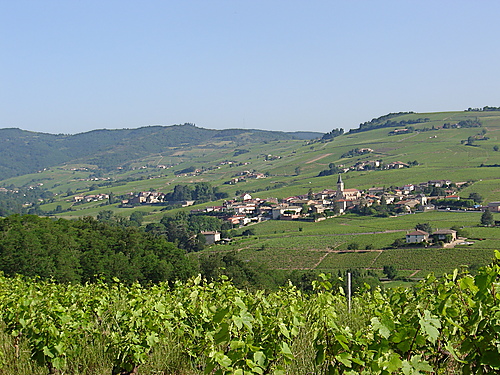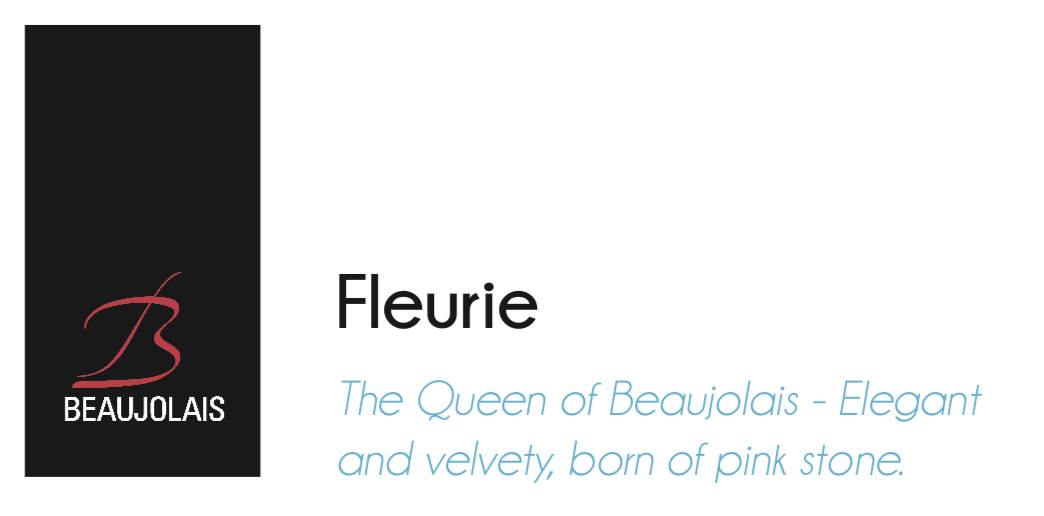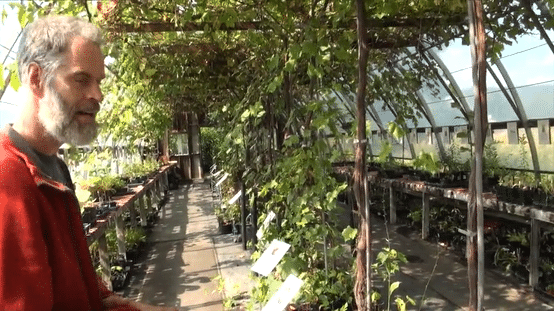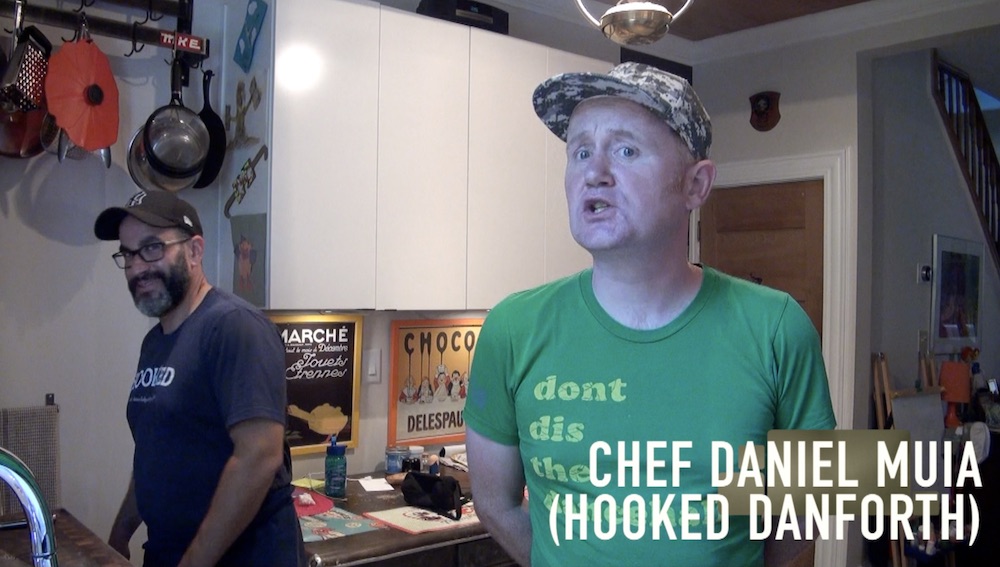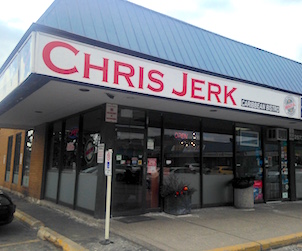Appellation: Beaujolais Fleurie
Appellation: Fleurie (pronounced “floo – ree”), one of the 10 Beaujolais Crus
Geographical Location: The Fleurie appellation is located in the north of the Beaujolais region and covers an unbroken area of three square miles between the Crus of Moulin-a-Vent and Chiroubles. The actual village of Fleurie is positioned between Mâcon and Villefranche.
Topography: At the end of the Tertiary Era, an exceptional tectonic and magmatic event changed the landscape of this region forever. The land was thrust upwards and hills formed across the Beaujolais region were gradually shaped over the years by erosion. All of the Beaujolais Crus are located within this zone of steep hills in the north of the region, and Fleurie is at the very centre of this steep undulating area.
It is said that the Fleurie appellation gets its lightness from being sheltered by the Avenas, Durbize, and Labourons hill ranges. The Fleurie vineyards back on to this particular massif.
La Madone stands at the highest point of these valleys, at some 425 metres (1,400 feet) above sea level. This magnificent hilltop with its historic chapel, is viewed as being the landmark of the Fleurie region and its vineyards, which grow from the south-eastern side of the hill all the way up up to the Madone chapel. These slopes, some of which have a staggering 50% gradient, offer superb vistas over the area where the Crus are grown. It’s seen as being one of the very best places to watch the sun slowly set over the Chiroubles vines to the west.
Soils: Fleurie is viewed as being the archetypical granite Cru. Although all of Beaujolais has volcanic granite at the base of its soils, making it markedly different from the rest of Burgundy, the soils of Fleurie are almost entirely made up of a particular pink-coloured granite that is wholly unique to this Cru of Beaujolais. It’s said that his very specific terroir give the wines of Fleurie their delicate, elegant robe and their pretty floral notes.
When it comes to soils, the Fleurie Cru can basically be divided into two zones:
In the higher and steeper vineyards near the crest of the hill the soils are much thinner than those below. This acidity and dryness from the coarse sandy soil (formed by the decomposition of aforementioned pink granite) leads to wines that are markedly more aromatic and lighter in body.
Down below the main village one will find much deeper, denser soils with occasional patches of clay, leading to wines that can have considerably more body and are often suitable for longer term cellaring.
Grape Varietals: Gamay is the dominant grape in Fleurie, but as in all of the Beaujolais region, white grapes such Chardonnay, Aligoté and Melon are allowed in percentages of up to 15%.

History: According to local legend, the name Fleurie comes from a Roman legionnaire called Florus, who was said to have made a home for himself on one of the hills above the vines.
Founded in 1927, La Cave des Producteurs des Grands Vins de Fleurie is the oldest wine co-operative in the Beaujolais region. Today, it is responsible for around one third of the appellation’s entire production. The co-op currently has around 280 members, and works 300 ha (740 acres) of vines across 13 Appellations (Fleurie, Moulin à Vent, Chiroubles, Chénas, Juliénas, St Amour, Regnié, Morgon, Brouilly, Bourgogne Blanc, Beaujolais Blanc, Beaujolais and Beaujolais- Villages). It is by far the biggest producer of Fleurie Appellation d’Origine Contrôlée wines.
Wine Styles: Before it was viewed as being passé to apply gender to wines, the wines of Fleurie were often described as being very “feminine”, and to this day the Cru is known as “The Queen of Beaujolais”.
I feel that it is always best to be wary of the myth that they are so-called “feminine” wines as some examples are anything but. Fleurie’s more powerful examples tend to come from close to the border with northerly neighbour Moulin-à-Vent.
It’s true that many of the wines of Fleurie have a certain softness when compared to other Beaujolais appellations, but as is the case in a number of Crus, it is difficult to state a one-size-fits-all descriptor for all the bottles produced in this particular wine-growing area.
The Cru’s terroir’s slow erosion and uneven decomposition, coupled with differences in soil depth, produces wines that are unique and distinctly different from one year to the next. Vintage plays an important role in this part of the wine world.
If one were to speak generally, the attack of a Fleurie in the mouth is markedly pronounced, the acidity is relatively low, and the tannins are usually silky and gentle. These particular Beaujolais wines also usually have a pleasurable roundness on the palate, making them consistently moreish, which probably explains some of their relative success in the north American market.
The moderate continental climate of the Cru sees high sunshine hours and a definite cooling effect from the Mediterranean, which prolongs the ripening period and brings the wine balance and natural acidity.
On the charming perfumed nose one will often find spring-flower floral and fruity aromatics of iris, lilac, violet, kirsch, rose, red fruit (mainly strawberries, but sometimes crunchy cranberries), peach, gooseberry, and a fascinating peppery, savoury character.
This is usually followed by a tightly-wound palate with delicious mouth-watering acidity, elegant, refined tannins, and a very distinctive “wet tarmac” mineral character and finish, that for me gives away the better examples when tasting blind.
Although one can find lighter, nouveau-like, Fleurie wines that are especially approachable and easy to drink, there are Fleurie wines from top domains that can age for five to six years, and in ideal vintages, a vin d’exception (read: a wine of exception) is produced that is meant to age at least four years before consuming and can very occasionally last for up to 20 years.
Food Pairing: I always serve my Fleurie very slightly chilled and have found it to pair rather well with sausage, Boudin Noir (read: Blood Sausage/Black Pudding), Quiche Lorraine, Roast Chicken, cheeses such as Cantal, Reblochon, and Saint Nectaire, or the traditional Andouillette (read: chitterling/intestine sausage) cooked in Fleurie, naturally! Also recommended by locals are Grilled Prime Rib with a Fleurie Reduction Sauce, Veal Scallopini, White Bean and Ham Stew, Roast Lamb with Thyme, Grilled Ahi Tuna with Onions and Tomatoes, and Oven-Roasted Salmon.
2015 Villa Ponciago “La Réserve” Fleurie, Beaujolais, France (Alcohol 13%) LCBO Vintages $19.95 (750ml bottle)
Made by our friends at Bouchard Père et Fils in Burgundy, this reserve level Fleurie in the 2015 vintage is showing particularly well out of the gate. The dark purple colour and intense dark fruit profile speaks to the warmer 2015 vintage. There’s that trademark Fleurie charm and prettiness on the nose, as well as a little spiciness from the oak, and some gorgeous chalkiness on the palate.
![]()
(Four and half apples out of a possible five)
2013 Domaine des Nugues Fleurie, Beaujolais, France (Alcohol 13%) LCBO Vintages $17.75 (750ml bottle)
It’s always nice to see a Fleurie with a little age on it, and this is great example of an evolved Fleurie, with some lovely tertiary characteristics emerging on the bouquet. There’s a terrific nose of black plums, black cherries, and stewed strawberries with nuances of forest floor. It’s pretty concentrated on the palate, with a little more heft than I have been used to with this Cru. The tannins are still quite firm and would probably improve with just a little more time in bottle, although it is drinking great now.
![]()
(Four apples out of a possible five)
2014 Vaucher Père & Fils Fleurie, Beaujolais, France (Alcohol 13.1%) LCBO Vintages $16.95 (750ml bottle)
Another Fleurie with a little bottle age, this Nuits-Saint-Georges Négociant-made wine is no slouch and ticks all the right boxes for the Cru. There is a superb ripeness on display here as the wine has been made in a decidedly generous Burgundian style, but this is beautifully buffered by some tart, crisp acidity that keeps all that wonderfully rich dark fruit in check. This is a distinctly fresh and appealing Fleurie that would serve as a great entry point to the Cru.
![]()
(Four and half apples out of a possible five)

Edinburgh-born/Toronto-based Sommelier, consultant, writer, judge, and educator Jamie Drummond is the Director of Programs/Editor of Good Food Revolution… And he’s been a life-long lover of Beaujolais.

